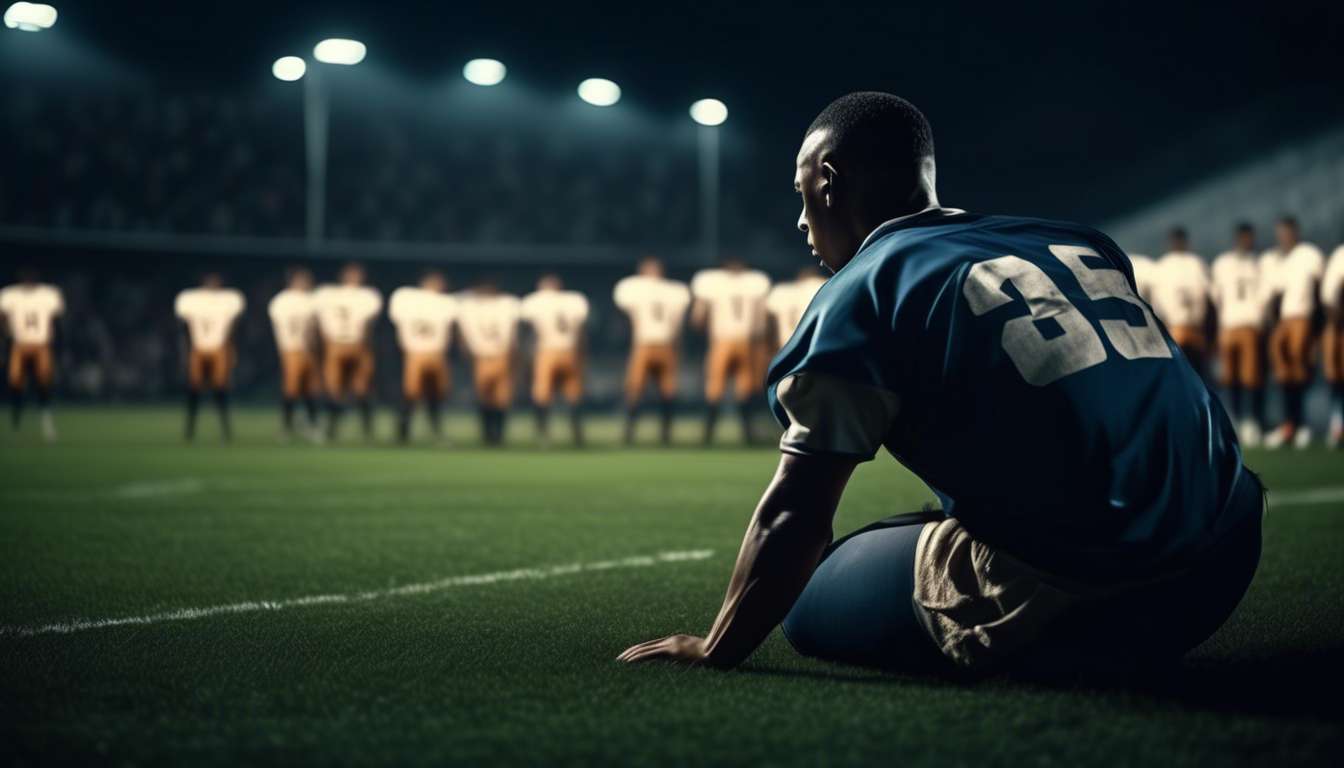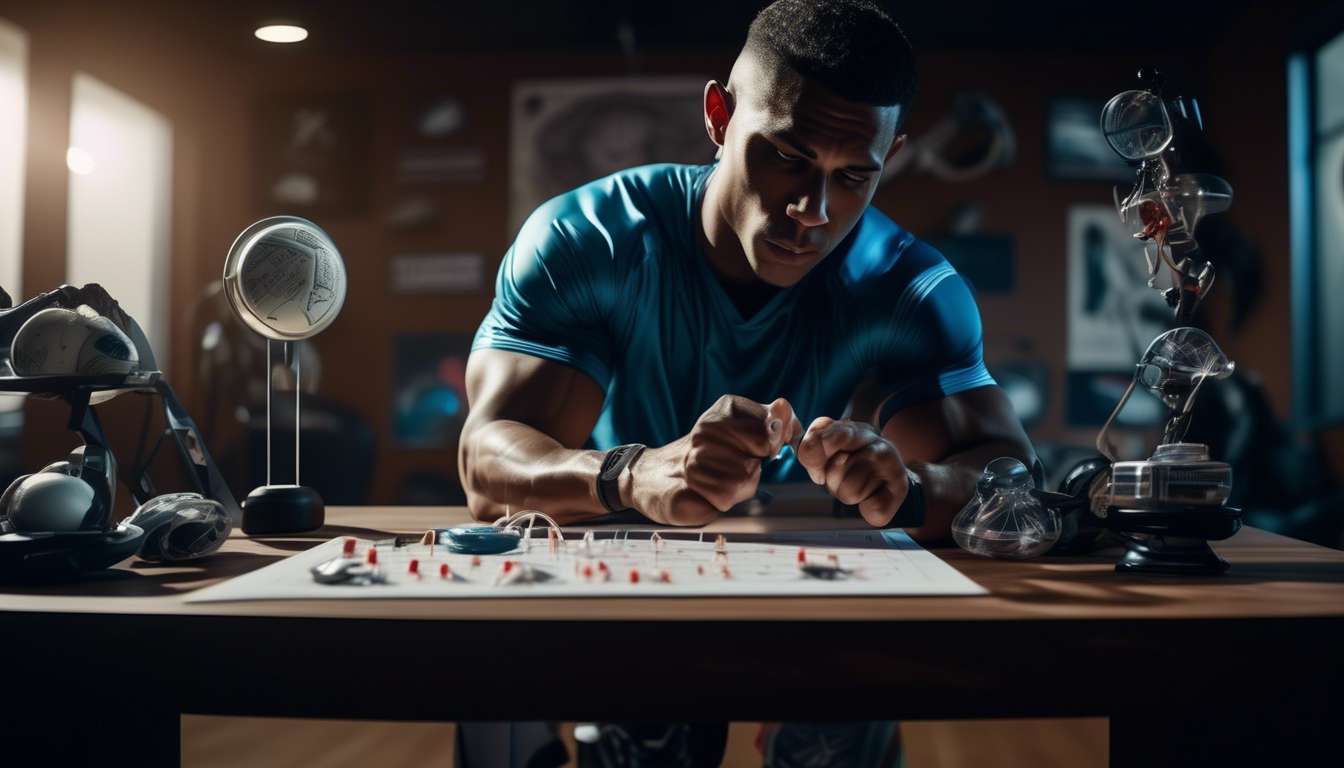As a team, we understand the critical role that each player holds in the collective performance of our group. Injuries, an inevitable part of sports, can significantly alter the dynamics and outcomes of our games.
Impact of Player Injuries:
-
Team Synergy and Strategy: When one of us is sidelined due to injury, it isn’t just a personal setback; it affects our entire team’s synergy and strategy. We must adapt quickly, often reshuffling positions and tactics to fill the void left by the injured player. This tests our resilience as well as our depth and cohesion.
-
Psychological Effects: The psychological impact is equally profound. We rally around our injured teammate while maintaining focus on our objectives.
Objective of the Article:
Through this article, we aim to explore how player injuries influence team performance, examining both the immediate effects and the long-term implications.
By understanding these dynamics, we can better prepare and respond, ensuring that we remain competitive and united in the face of adversity.
Team Synergy and Strategy Adjustments
When a key player gets injured, we must reevaluate our team synergy and make strategic adjustments to maintain performance. It’s a challenging moment that tests our resilience and unity. Injuries can upset the balance we’ve worked hard to create, but they also offer us an opportunity to strengthen our team dynamics. We gather together, reminding ourselves that each member plays a crucial role in our collective success.
Our first step is to assess how the injury impacts our current strategy. We ask ourselves:
- How can we adjust our gameplay to cover for the missing skills?
- What strengths can we leverage from the remaining team members?
These questions guide us to develop a new approach, ensuring we adapt seamlessly and remain competitive.
We communicate openly, encouraging everyone to step up and share their perspectives. This shared responsibility fosters a sense of belonging and empowerment, allowing us to not only cope with the injury but grow stronger through it.
Depth and Cohesion Test
Evaluating our team’s depth and cohesion during an injury crisis reveals how well we can adapt and continue to perform at a high level. When injuries strike, it’s a true test of our team dynamics. We’re forced to rely on players who might not usually have significant roles, demanding strategy adjustments and a deeper understanding of our collective strengths. It’s in these moments that our preparation and unity really shine through.
Key Actions During an Injury Crisis:
-
Assess Bench Strength:
- Continuously evaluate the readiness of all team members.
- Ensure everyone is prepared to step up when needed.
-
Strategy Adjustments:
- Find new ways to leverage the skills of available players.
- Adapt strategies to fit the current team composition.
Benefits of Facing Challenges:
-
Fosters Adaptability:
- Encourages a sense of belonging among all team members.
- Highlights the importance of every individual’s contribution.
-
Builds Resilience:
- Strengthens the bond within the team.
- Reinforces the team’s identity as a cohesive unit.
By embracing these challenges, we prove that our success isn’t solely dependent on star players but on the collective power of our entire squad. Together, we build resilience and a stronger bond, showcasing our ability to thrive even in adversity.
Psychological Impact on Teammates
The Impact of Key Players’ Absence
The absence of key players can significantly affect our team’s morale and confidence. When injuries strike, we feel the void in our team dynamics. It’s not just about losing a strong player; it’s about losing a teammate who inspires us and leads by example. Their absence forces us to rethink our strategy and adjust our approach, which can be daunting.
Emotional and Team Dynamics
Injuries remind us of our own vulnerabilities, making us question our strength and resilience. This can create an emotional ripple effect, impacting how we connect and communicate on and off the field. We might find ourselves needing to:
- Step up
- Take on new roles
- Support each other more deeply
It’s a time when our unity and shared purpose are tested.
Team Resilience and Unity
We know that every player is essential to the fabric of our team. When one of us is down, it’s up to the rest of us to rally together, maintain our spirit, and continue pushing forward.
Resilience in Adversity
Our ability to overcome challenges and remain strong in the face of adversity defines our team’s resilience.
Injuries are inevitable, yet when they strike, we don’t falter. Instead, they unite us, strengthening our team dynamics. Each of us steps up, understanding that every player is crucial. We communicate openly, ensuring everyone feels supported and valued. This camaraderie isn’t just about sharing the field; it’s about sharing burdens and victories alike.
Injuries force us to make strategy adjustments, but these changes aren’t setbacks; they’re opportunities to innovate and grow.
- We assess our strengths.
- Identify areas to improve.
- Adapt swiftly.
By doing so, we maintain our competitive edge and continue striving towards our goals. It’s our shared commitment that fuels our resilience.
Together, we transform adversity into a stepping stone.
We’re not just a team on paper; we’re a family, bound by trust and tenacity. In every challenge, we find a chance to prove our unity.
Tactical Adaptations and Positioning
Our team’s tactical adaptations hinge on repositioning players to maximize their skills and exploit opponents’ weaknesses effectively.
Injury Response and Team Cohesion:
- When injuries occur, we’re more than just a group of individuals; we’re a cohesive unit that rises to face the challenges head-on.
- Our team dynamics shift as we embrace new roles and responsibilities, ensuring that every player contributes to the collective success.
- By adjusting our strategy, we maintain our competitive edge and ensure that no injury disrupts our momentum.
Adapting to Challenges:
- In this ever-evolving landscape, injuries demand quick thinking and flexibility.
- We analyze our strengths and look for opportunities to surprise our opponents.
- Whether it’s a defender stepping into midfield or a forward dropping back, our strategy adjustments reflect our unity and drive.
Commitment and Opportunity:
- Each player’s willingness to adapt showcases our shared commitment to the team’s goals.
- Together, we turn adversity into opportunity, reinforcing the belief that every member of our team is essential, valued, and capable of stepping up when needed.
Immediate Effects on Performance
The instant an injury occurs, we often notice a ripple effect that challenges our performance and demands immediate strategic recalibration.
Our team dynamics are instantly tested as we scramble to adjust to the unexpected absence. Injuries force us to rethink our game plan on the fly, and we must quickly shift our strategy to maintain our competitive edge. This requires all of us to be flexible and ready to step into new roles, fostering a sense of unity and resilience.
When a key player is sidelined, it’s not just about replacing skills; it’s about maintaining the spirit and cohesion that define us. We look to each other for support, ensuring that everyone feels involved and valued.
Strategy adjustments become crucial as we adapt positioning and roles to cover gaps. We pull together by:
- Communicating openly
- Relying on our collective strength
In these moments, our shared commitment and camaraderie become our greatest assets, reinforcing our bond as a team.
Long-Term Implications for Team
Injuries and Team Dynamics
Over time, we recognize that injuries can reshape team dynamics and influence our overall performance trajectory. When key players are sidelined, it forces us to rethink our strategies and adapt to new roles and responsibilities. This constant reshuffling can strengthen our resilience and foster a deeper sense of unity as we rally together to overcome challenges.
Long-term Implications of Player Injuries
However, the long-term implications of player injuries extend beyond immediate adjustments. We often find that our strategy adjustments become ingrained, leading to a more flexible and versatile team approach. Injuries might initially feel like setbacks, but they also offer opportunities for emerging talent to shine.
By embracing these changes, we cultivate a culture of adaptability and inclusivity, where every member feels valued and essential.
Growth and Opportunity
While injuries can test our mettle, they also serve as catalysts for growth, allowing us to evolve our team dynamics and maintain a competitive edge. Together, we turn adversity into an opportunity for collective strength and success.
Competitive Preparedness Amid Injuries
Our ability to stay competitive despite injuries hinges on proactive preparation and strategic foresight.
By recognizing the potential for injuries, we create a culture that encourages resilience and adaptability. Team dynamics play a crucial role here; when one player is sidelined, others must step up, showing that our strength lies in unity and shared responsibility.
We stay prepared by:
- Fostering versatile skills.
- Ensuring everyone understands their role within the team.
Strategy adjustments become essential.
- Analyze our current lineup.
- Tweak game plans to accommodate the absence of key players.
- This might mean shifting formations.
- Adapting play style to suit the strengths of available team members.
Our coaching staff works tirelessly to:
- Maintain morale.
- Ensure each player feels valued and ready to contribute.
Together, we transform challenges into opportunities, proving that injuries, while impactful, don’t define us. It’s about embracing our collective strength and moving forward as one.
How do player injuries affect ticket sales and fan engagement?
Player injuries can significantly impact ticket sales and fan engagement.
Effects of Key Player Injuries:
-
When key players are sidelined, fans may be less inclined to attend games or engage with the team.
-
This can lead to:
- Decreased ticket revenue
- A lack of enthusiasm among supporters
Strategies for Teams:
-
Keep Fans Excited:
- Implement engaging marketing campaigns
- Highlight other talented players on the roster
-
Invest in Fan Experience:
- Offer unique in-game experiences
- Enhance stadium amenities
-
Maintain Strong Communication:
- Provide regular updates on player recoveries
- Engage with fans through social media and community events
By focusing on these strategies, teams can maintain strong attendance numbers and a thriving fan base despite player injuries.
What role does medical staff play in managing player injuries and recovery timelines?
We rely heavily on our medical staff to ensure our players receive top-notch care and support throughout their recovery process. Their expertise and dedication are crucial in managing player injuries and establishing realistic recovery timelines.
By working closely with the coaching staff and players, our medical team plays a pivotal role in optimizing player health and performance on the field.
Their commitment to our team’s well-being is truly invaluable.
How do injuries influence a team’s financial decisions, such as trades and contracts?
Injuries and Financial Impact on Teams
When injuries occur, they can significantly impact a team’s financial decisions. The need for trades or bringing in replacement players can lead to increased costs.
Additionally, long-term contracts for injured players can tie up financial resources without immediate on-field contributions.
Balancing Financial Implications
Balancing the financial implications of injuries while maintaining a competitive team is a constant challenge. Teams must consider:
- The immediate costs of acquiring replacement players.
- The long-term financial commitments to injured players.
- The overall impact on team performance and competitiveness.
By carefully managing these aspects, teams strive to navigate the financial challenges posed by player injuries effectively.
Conclusion
In conclusion, player injuries can significantly impact team performance in various ways.
From immediate effects on the field to long-term implications for the team’s competitive readiness, injuries challenge both the players and coaches to adapt and overcome.
Key factors in navigating injuries include:
- The depth of a team’s roster
- Psychological resilience of teammates
- Strategic adjustments
Ultimately, how a team responds to adversity can define their success in the face of challenges.




